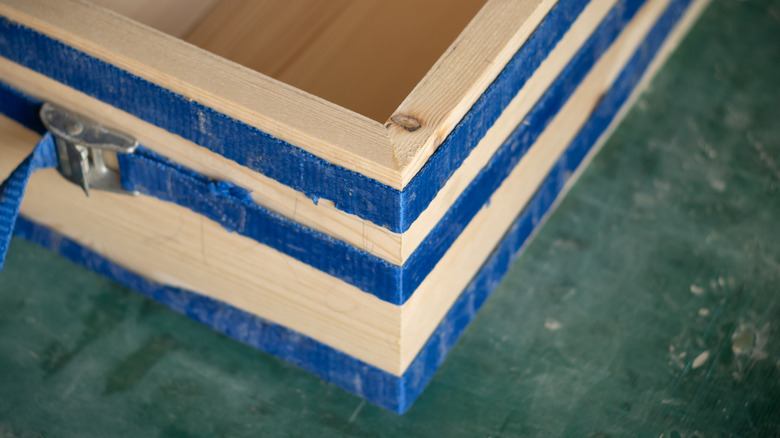Use A Screwdriver To Get The Ideal Miter On Wood Edges
Avoiding politics and religion is a good rule of thumb for pleasant conversations, but if you really want to get some woodworkers riled up, try bringing up the topic of burnishing mitered edges. This common practice uses a hard, rounded tool to crush the fibers along two boards' edges and close a small gap in a miter joint. It produces a great-looking edge. For an example, see @madebetterhome's mantle build on Instagram. It's easy, fast, and perfectly sufficient for most DIY projects.
So what's the problem? There usually isn't one; it's no more problematic than using wood filler or plugging a countersunk screw hole. People use this trick for an imperfectly cut miter — usually produced by a miscalibrated miter saw — or to create a square build. Structurally, such a minor imperfection is usually irrelevant; wood glue and mechanical fasteners typically provide a miter joint's strength anyway. As long as the rest of the piece is in square, this is largely an aesthetic issue ... not a matter of craft and quality.
There are times this technique isn't a good solution. If your goal is to soften the corner by rounding it over, this is probably not the right approach. If the miter is cut well, this technique won't accomplish much, and you're much better off either sanding the sharp corner or rounding it over with a router the way you would create a wood bullnose edge for a step. This technique probably works best on edge grain, since end-grain miters aren't likely to fold over when crushed. Of course, sanding and routing a round-over will only work properly on a well-cut miter joint.
How to make the miter gap disappear
In terms of the skill and effort required for the miter burnishing trick, you probably won't get a better return on your woodworking effort. If the mitered pieces that form an outside corner don't meet perfectly, you simply rub — that is, burnish — the corner itself with the shaft of a screwdriver, or some similarly shaped tool. You don't want a tool with a corner or any kind of cutting edge, like a scraper; the intent isn't to cut the wood fibers, but to push them over and into the gap. A round screwdriver shaft as seen in the video will work, or you might want to invest in a proper burnishing rod — a common tool in cabinetry, leatherworking, and jewelry making. Because it has two handles on either side, the O'Skool scraper burnisher might be ideal for the job.
The precise technique and amount of force required will vary by wood type and the size of the gap you're trying to close. It will be easier to burnish a miter with a gap that isn't full of wood glue, unless the glue is still wet. Burnish, as lightly as is effective, at a shallow angle to each board. Then finish with a pass that's at a 45-degree angle to both, assuming yours is a 90-degree miter. (The trick will also work for other shapes, like cutting wood angles for hexagons.) If you roll your mitered joints with tape, you can burnish before removing the tape if you prefer. This should close the gap nicely and give you a nice-looking finished edge.
